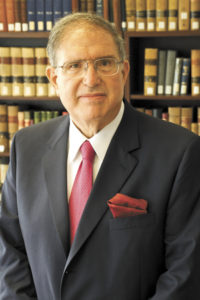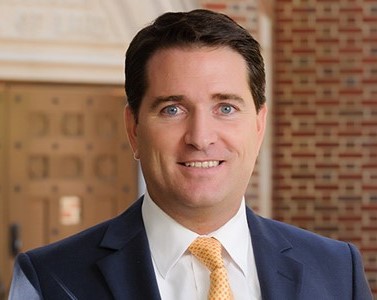Monthly Archives: June 2018
Jun 29, 2018 Steve EagleProperty
“Inclusion” is one of those words that typically elicits warm and positive feelings. However, when an entire society is described as “inclusive,” the question arises—included in what? Putting the question another way, is it even possible for a community be all-inclusive?
Often, contemporary American political and legal discourse draw Manichaean distinctions between advocacy of inclusivity and of xenophobia. With regard to land use and housing issues, complete racial and socioeconomic integration of neighborhoods thus are juxtaposed against sinister demands by NIMBYs, who demand that integration take place “not in my back yard.”
Professor Kenneth Stahl is both an advocate for inclusion and an opponent of easy over-simplification. His analyses of economics, sociology, and political theory in The Challenge of Inclusion led him to observe that, at a fundamental level, the problem resides in the very notion of “community” itself. Continue reading "The Conflicting Tugs of Community and Inclusion"
Jun 28, 2018 Reuel SchillerLegal History
My mother, a life-long New Yorker, was an opinionated person. There were certain politicians she didn’t like, and, if they came up in conversation, she would not hesitate to tell you so. At the top of this list was Richard Nixon—hardly a surprising entry considering my mother’s identity as a postwar, Jewish liberal. (I don’t think Nixon would have liked my mom very much either.) Not far below Nixon was Gerald Ford. His greatest crime, of course, was pardoning “that sleazy bastard Nixon.” Ford’s perfidy, however, also hit closer to home. In 1975, as my mother’s beloved city spiraled closer and closer to bankruptcy, Ford refused to allow the use of federal resources to help New York weather its financial woes. “Ford to City: Drop Dead,” read the New York Daily News’ infamous headline after Ford announced that he would veto any federal legislation that would “bail out” the City. New York’s fiscal crisis cost my father his job at the City University of New York, so, as far as my mom was concerned, the “Drop Dead” was aimed at our family.
When it came to New York’s fiscal crisis, Ford was not the only politician who earned my mother’s scorn. A large portion of it was reserved for a man who could not have been more different from the tall, athletic, Midwestern president: Abraham Beame, the petite, uncharismatic accountant who had the misfortune to be the mayor of New York City when the crisis peaked. According to mom, it was Beame’s incompetence, his tolerance for profligate spending, and his subservience to both the corrupt Democratic political machine and municipal labor unions that brought New York to the brink of ruin.
Kim Phillips-Fein’s marvelous book, Fear City: New York’s Fiscal Crisis and the Rise of Austerity Politics, argues that my mother’s view of the crisis, which has become the received wisdom, is incorrect. She provides a detailed history of New York’s financial woes. The City, she explains, was committed to promoting social-democratic urbanism by enacting programs that promoted economic egalitarianism. These programs—free higher education, a massive city-funded system of public hospitals, cheap mass transit, for example—were expensive, but they did not cause the fiscal crisis. Instead, Philips-Fein argues that it was a combination of external circumstances (the end of the postwar economic boom, deindustrialization, and changes in securities markets) and the ideological desires of Republicans in the Ford Administration that drove New York to the brink of bankruptcy. Desperately in need of financial resources, the City was forced by Ford to cut its budget dramatically in exchange for the short-term loans that saved the City from bankruptcy. Continue reading "Urban History as Legal History"
Jun 27, 2018 Michael GreenJurisprudence
Christopher M. Newman,
Hohfeld and the Theory of In Rem Rights: An Attempted Mediation in
The Legacy of Wesley Hohfeld (forthcoming 2018), available at
SSRN.
Rights come in different types, and the failure to distinguish among them can lead one into errors. So argued Wesley Newcomb Hohfeld, who—in two articles published in the Yale Law Journal in 1913 and 1917—offered a highly influential categorization of rights by type. This marvelous collection of essays, edited by Shyam Balganesh, Ted Sichelman and Henry Smith, assesses the Hohfeldian legacy. I’ll largely focus on Christopher Newman’s contribution, which I found particularly helpful. Some property scholars have criticized Hohfeld’s approach as unable to account for the distinctive character of property rights. Newman argues, I think rightly, that the two are compatible.
That Hohfeld was correct to distinguish rights by their type is undisputed. The right that I have to be present on Blackacre by virtue of owning it and the right that I have as a boxer to punch my opponent are clearly different in structure. As Hohfeld would describe it, my right to punch is a privilege only, whereas my right to be on Blackacre includes privileges and claims. X has a privilege with respect to Y that X perform act φ if and only if, by φ-ing, X violates no duty to Y. X has a claim with respect to Y that Y φ if and only if Y has a duty to X to φ. I have a privilege to punch my opponent, because, by punching him, I do him no wrong. But this “right” to punch includes no claim with respect to him: he has no duty to let himself be punched. My right to be on Blackacre, by contrast, includes not only privileges (by being on Blackacre, I violate no duty to you) but also claims (you cannot interfere with my being on Blackacre, for example, by expelling me from it). (For the record, Hohfeld identified two other types of right—powers and immunities—and would say that my rights with respect to Blackacre include them too, but I leave these details aside.) Continue reading "Hohfeld and Property"
Jun 26, 2018 Dotan OliarIntellectual Property Law
The early legal literature on law and social norms tended to paint a rosy picture. Social norms were generally depicted as an optimal set of organically developed rules, informed by the experience of a close-knit community, and thus superior to formal law as a way to regulate behavior. Later scholars came to realize that nothing guarantees the optimality of social norms: they may perpetuate practices that no longer make sense, or they may advance the interests of certain groups but not social welfare. In such cases, formal law holds the promise of overriding suboptimal norms and moving society to a better place.
A few years back, I wrote, together with Christopher Sprigman, one of the first papers on social norms in intellectual property law in which we explored how standup comedians informally regulate the ownership and transfer of rights in jokes and comedic routines. While we thought that in that particular case the system of social norms largely brought good outcomes in terms of inducing creativity, that conclusion came at the end of reviewing their advantages relative to copyright law, but, importantly, also their relative disadvantages. For example, we noted aspects of the norms system that we thought were unattractive for creativity relative to formal copyright law: standups norms’ system does not recognize a term limit (so the norms’ system discourages dissemination and reuse of old materials), does not harbor a concept of fair use (so it discourages derivative and sequential creativity), and grants a scope of protection that exceeds that which is available under copyright’s idea/expression doctrine (so it discourages borrowing high level concepts and themes from others).
Since we wrote our paper, the law and social norms field of IP has grown considerably, and is, I believe, one of the most important developments in IP theory over the last decade, not to mention a fun and interesting one. Others have explored social norms that are copyright-like, patent-like, and trademark-like. More recently, the literature moved to make more general claims and observations based on a rich array of norms’ systems and case studies. One of the latest and important additions to this recent literature is the paper by Stephanie Bair and Laura Pedraza-Fariña which makes the claim about the dark side—i.e. counterproductive creativity-wise—of social norms more generally. In doing so, it builds on much social science and psychology literature. Continue reading "IP Norms’ Dark Side"
Jun 25, 2018 Amy MonahanHealth Law
The lack of price transparency in health care is well established. Patients are almost never informed of the cost of their care prior to receiving services. Even if a patient makes a concerted effort to determine price prior to receiving care, most are told that price information is simply unavailable. This lack of transparency results in a long list of negative consequences for both patients and the health care system as a whole.
Wendy Netter Epstein’s article, Price Transparency and Incomplete Contracts in Health Care, revisits this well established problem from a novel perspective. The article examines the lack of price transparency between providers and patients through contract theory. After all, when a patient seeks medical care, she signs a contract with an unspecified price term. Most contracts simply require the patient to pay whatever the provider ends up charging. While such incomplete contracts are deemed unenforceable in many other contexts, Professor Epstein explains that courts uniformly allow open-price contracts for medical care, often based on incorrect assumptions about the inability to ever know the cost of care in advance. The article then relies on contract theory to propose a solution: courts should, in appropriate cases, adopt a penalty default rule that provides a price of zero where the price term is unspecified. A default price of zero would essentially force providers to include price in the contract, so that consumers are aware prior to receiving care the financial consequences thereof. Continue reading "A Fresh Take on Health Care Price Transparency"
Jun 22, 2018 Courtney CahillFamily Law
Professor Douglas NeJaime’s article, The Nature of Parenthood, unites concepts, ideas, bodies of law, and legal subjects that have largely been viewed in isolation—until now. The “first comprehensive account of contemporary regulation of parental recognition in the context of ART [alternative reproductive technologies],” (p. 2270) The Nature of Parenthood brings into focus the similarities, connections, and dynamic relationships between and among things that scholars often consider separately: ART law and the law of unwed fatherhood; non-biological mothers in opposite-sex relationships and non-biological fathers in same-sex relationships; intended genetic mothers and unwed biological fathers; family law and constitutional law; past and present. Equal parts legal history, doctrinal and constitutional analysis, and legal reform, The Nature of Parenthood is a beautifully executed and orchestrated work that above all else spins an absorbing narrative of parenthood in the United States—one that defies clear distinctions among beginning, middle, and end.
Professor NeJaime’s principal objectives in The Nature of Parenthood are threefold: (1) to show that modern parentage law has “carri[ed] forward” (p. 2289) the past in ways that continue to exclude traditionally marginalized groups and to underappreciate parenthood’s social dimension; (2) to argue that the “legacies of exclusion embedded” (p. 2268) in modern parentage law are in conflict with many of the norms that have emerged from recent constitutional law and family law jurisprudence; and (3) to suggest reforms to family law and constitutional law (relating mainly to parentage) that better align both bodies of law with the values that have materialized from each, in fits and starts, over the last fifty to sixty years. Continue reading "The Story of Parenthood"
Jun 21, 2018 Jack PreisLex
Constitutional tort remedies, like their common law counterparts, are presumed to deter future violations. But the inference of deterrence depends, of course, on a number of sub-inferences that may not hold. For example, deterrence may not obtain if the officer is indemnified and therefore does not feel the personal sting of a money judgment. In a recent article, Professor Joanna Schwartz showed that officer indemnity is, in fact, nearly universal. But maybe deterrence might still obtain because the police department, which has to foot the bill of the indemnification agreement, will push its officers to obey the law. In another article, however, Professor Schwartz showed that this might not happen because most departments carry liability insurance and the cost of indemnification will often simply disappear into a budget line item for insurance. If officers are indemnified, and departments are insured against any loss, how will constitutional tort actions have any deterrent force? Schwartz suggested at the end of her article that one avenue for deterrence might be found within the operation of the insurance agreements themselves and that further study was needed.
Professor John Rappaport’s fantastic new article, How Private Insurers Regulate Public Police, fills that need, and does so splendidly. To study an issue like this, one must dive deep into the insurance industry itself, and that is exactly what Rappaport did. His article is based on “interviews with over thirty insurance industry representatives, civil rights litigators, municipal attorneys, police chiefs, consultants and more.” There is so much to the article that any summary will fail to do it justice, but briefly, Rappaport charts a chain of incentives that works as follows: police departments have an incentive to obtain liability insurance because it reduces risk. Insurance companies, in turn, have an incentive to reduce claims, thus increasing their profits. To reduce claims, insurance companies often encourage (or even require) education, training, accreditation, and other conditions that tend to improve officer compliance with the law, thus reducing claims. Departments have an incentive to follow insurance companies’ guidance on these matters not just because they need and want liability insurance, but also because doing so may reduce the cost of premiums and deductibles. Continue reading "Do Civil Rights Remedies Deter Police Misconduct?"
Jun 20, 2018 Ruthann RobsonEquality
Maya Manian,
The Story of Madrigal v. Quilligan: Coerced Sterilization of Mexican-American Women, in
Reproductive Rights and Justice Stories (forthcoming 2019), available at
SSRN.
The meaning of “success” in litigation challenging inequalities is at the core of Professor Maya Manian’s essay about the extensive effort to end sterilization of Mexican-American women at the Los Angeles County + USC Medical Center in the 1970s.
In one sense, the case of Madrigal v. Quilligan is a great victory. The federal judge who first heard the case issued a preliminary injunction directed at making the Spanish language consent forms understandable to patients. This judge then signed off on a settlement agreement between the Madrigal plaintiffs and the California Department of Health, approving California’s enhanced sterilization consent requirements, which themselves had been the product of lobbying and media efforts by Chicana activists. The United States Department of Health issued new guidelines requiring bilingual consent forms and instituting a federal monitoring program. The case “galvanized Chicana feminist activism” in ways that made it clear that a broader notion of “reproductive justice” was necessary: it should not be limited to the emphasis by white feminists on abortion and contraception but must also include abusive practices intended to limit reproduction by women of color and impoverished women. Continue reading "Resisting Attempts to Control the “Hyper-Fertile”"
Jun 19, 2018 Herbert BurkertTechnology Law
There is a relatively new SSRN source I have found to be very useful: the Chinese Law e-Journal sponsored by the University of Hong Kong Faculty of Law (edited by Fu Hualing and Shitong Qiao, and thus referred to as Fu and Qiao, which appropriately might be translated as a “happy or blessed bridging”). This source is very broad with regard to the subjects it covers—many among them relating to Technology Law—and provides a valuable insight into how mainly but not exclusively Chinese researchers view developments in China and in the world.
Internet Governance: Exploration of Power Relationship, by Yik Chan Chin and Changfeng Chen, is included in this e-Journal, and was presented at the 2017 Giganet Symposium in Geneva in December last year. That symposium was held back to back (“Day Zero”) with the annual meeting of the Internet Governance Forum (IGF), a United Nations forum that sees itself as perhaps the example of a multistakeholder platform for governance. The paper looks at the reality of Internet governance in China, in search for a mechanism that comes close to the IGF’s multistakeholder model. It provides both a valuable account of the realities of Internet governance in China, and a method for thinking about what constitutes power in blends of multistakeholder and directive governance. Continue reading "Power-Lest it Should Be Forgotten"
Jun 18, 2018 Elizabeth JohCriminal Law
Anna Roberts,
Arrests as Guilt, __
Ala L. Rev. __ (forthcoming 2018), available at
SSRN.
We live in a world in which the most detailed information is used to identify and make judgments about us. Facebook wants to know whether you like grass, or a certain kind of wrestling. Google may sell advertisements based on searches for “chest pain.” But in the criminal justice world, we can be sloppy, and dangerously so. As Anna Roberts explains in her forthcoming article, Arrests as Guilt, there is a marked tendency to interpret the eleven million arrests made every year as findings of guilt. That is, we see that someone is arrested, and we conclude that the person is guilty of a crime. That assumption, made too often by journalists, academics, and the public, creates a host of problems.
Most of us can readily recall examples when media outlets appear to equate arrests with guilt. “Perp walks”—deliberately stigmatizing public displays of an arrested person—are common for notorious criminal cases. (Journalists paid considerable attention to the books carried by disgraced movie producer Harvey Weinstein when he recently surrendered at New York Police headquarters, for instance.) But more serious treatments of arrests suffer from the same problem too. Continue reading "Arrest, Guilt, and the Difference Between the Two"















